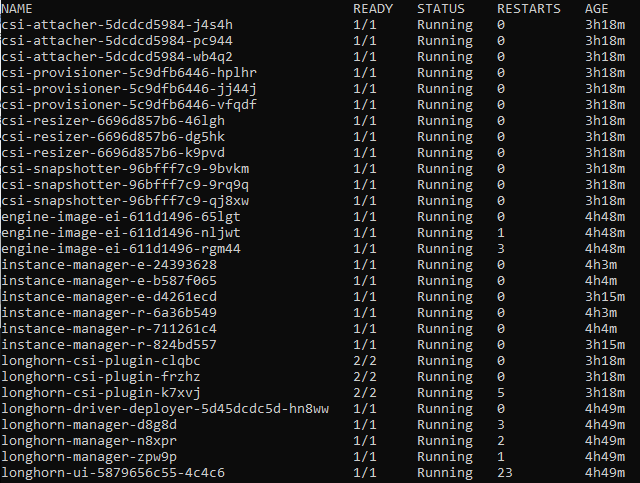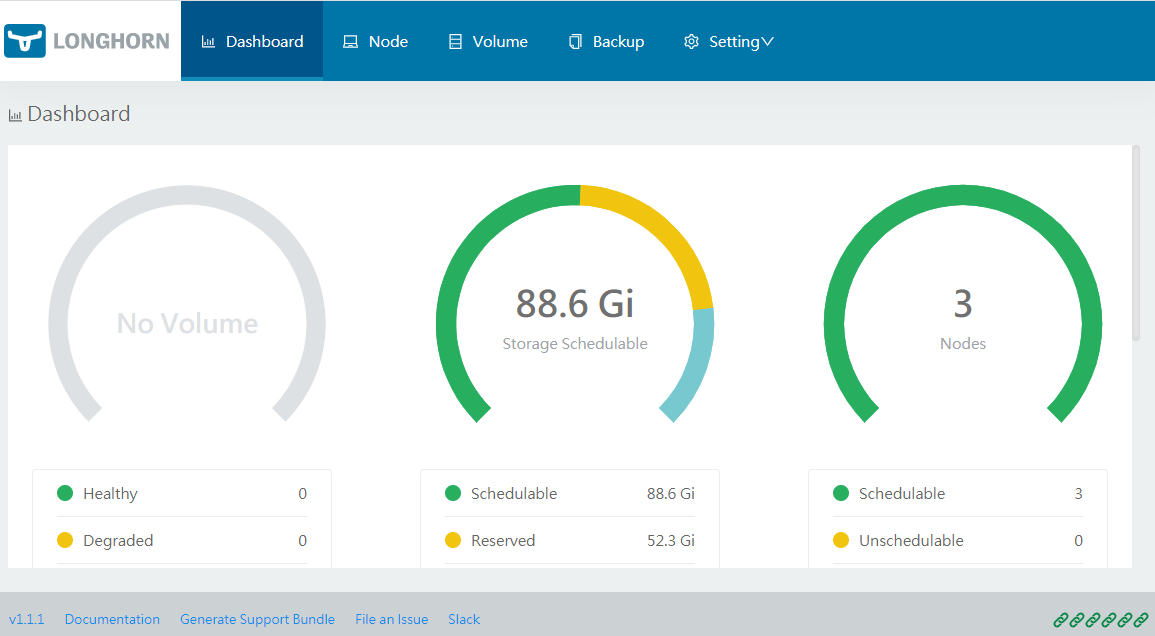By running Raspberry PI Cluster with Longhorn, you will have a simplified, easy to deploy cloud-native persistent block storage
Raspberry Pi Cluster and Longhorn
(Total Setup Time: 30 mins)
In this section, I will install Longhorn , a highly available persistance storage for Kubernetes. This guide assumes that you have a working Raspberry PI Cluster. If you do not have, please follow Kubernetes Cluster with Ansible or HA Kubernetes Pi Cluster (Part I) .
Preparation
(10 mins)
First, you need to install helm .
curl https://baltocdn.com/helm/signing.asc | sudo apt-key add -
sudo apt-get install apt-transport-https --yes
echo "deb https://baltocdn.com/helm/stable/debian/ all main" | sudo tee /etc/apt/sources.list.d/helm-stable-debian.list
sudo apt-get update
sudo apt-get install helm
# Check helm version
helm version
# Helm version result
version.BuildInfo{Version:"v3.6.0", GitCommit:"7f2df6467771a75f5646b7f12afb408590ed1755", GitTreeState:"clean", GoVersion:"go1.16.3"}Second, for the managing of Calico resources, I installed the command line interface .
curl -o calicoctl -O -L https://github.com/projectcalico/calicoctl/releases/download/v3.18.4/calicoctl-linux-arm64
chmod +x calicoctl
./calicoctl version
# Export configuration
export KUBECONFIG=~/.kube/config
export DATASTORE_TYPE=kubernetes
# Check the configuration
calicoctl get workloadendpoints
calicoctl get nodesThird, if you wish to, you may install kubernetes-dashboard with these commands:
# Installs Web UI
curl https://raw.githubusercontent.com/kubernetes/dashboard/v2.2.0/aio/deploy/recommended.yaml -o kubernetes-dashboard.yaml
kubectl apply -f kubernetes-dashboard.yaml
# Creates cluster-admin role
kubectl create serviceaccount dashboard
kubectl create clusterrolebinding dashboard --clusterrole=cluster-admin --serviceaccount=default:dashboard
# Gets login token
kubectl get secrets
kubectl describe secret dashboard-token-7xmhx
# Runs proxy on your host machine
kubectl proxyFinally, you may access the Kubernetes Web UI by pointing to:
http://localhost:8001/api/v1/namespaces/kubernetes-dashboard/services/https:kubernetes-dashboard:/proxy/
Installing Longhorn
(20 mins)
First, following the official guide , please run environment_check.sh and verify that all is good to go.
Second, install Longhorn with Helm 3 with these commands:
kubectl create namespace longhorn-system
helm install longhorn longhorn/longhorn --namespace longhorn-system
# Confirm that deployment is successful (this might take quite a while)
watch kubectl get pod -n longhorn-system
Third, you may access the Longhorn using these commands:
# Get name of longhorn-frontend
kubectl get svc -n longhorn-system
# Runs port-forward on your host machine
kubectl port-forward services/longhorn-frontend 8080:http -n longhorn-system
That’s it! The Raspberry PI Cluster with Longhorn is ready! Now, you have a highly availale persistance storage.


Troubleshooting
Calico node running but show up as 0/1
With the CLI command, calicoctl node status, I realized that the peer address are in different range.
# Check IP address
ip addr
# Re-configure to using same interface
kubectl set env daemonset/calico-node -n kube-system IP_AUTODETECTION_METHOD=interface=eth0
# Re-apply Kubernetes setting
kubectl apply -f ~/calico-etcd.yaml
longhorn-system namespace deletion stuck in terminating
While uninstalling Longhorn, I faced this issue.
helm uninstall longhorn -n longhorn-system
kubectl delete namespace longhorn-system
# Run this command when namespace deletion takes forever
kubectl get namespace longhorn-system -o json \
| tr -d "\n" | sed "s/\"finalizers\": \[[^]]\+\]/\"finalizers\": []/" \
| kubectl replace --raw /api/v1/namespaces/longhorn-system/finalize -f -Error: rendered manifests contain a resource that already exists.
During re-installing of Longhorn, I realized some of the custom resources definition were not removed.
# Check if there are any crd ending with longhorn.io
kubectl get crd
# Delete each of those
kubectl patch crd/engineimages.longhorn.io -p '{"metadata":{"finalizers":[]}}' --type=merge
kubectl patch crd/instancemanagers.longhorn.io -p '{"metadata":{"finalizers":[]}}' --type=mergeNode does not appear in Longhorn
You may check on the taint value if any of the master nodes are not in Longhorn.
kubectl describe node master3# Sample result
...
Taints: node-role.kubernetes.io/master:NoSchedule
...
# Remove the taintness from master3
kubectl taint node master3 node-role.kubernetes.io/master:NoSchedule-